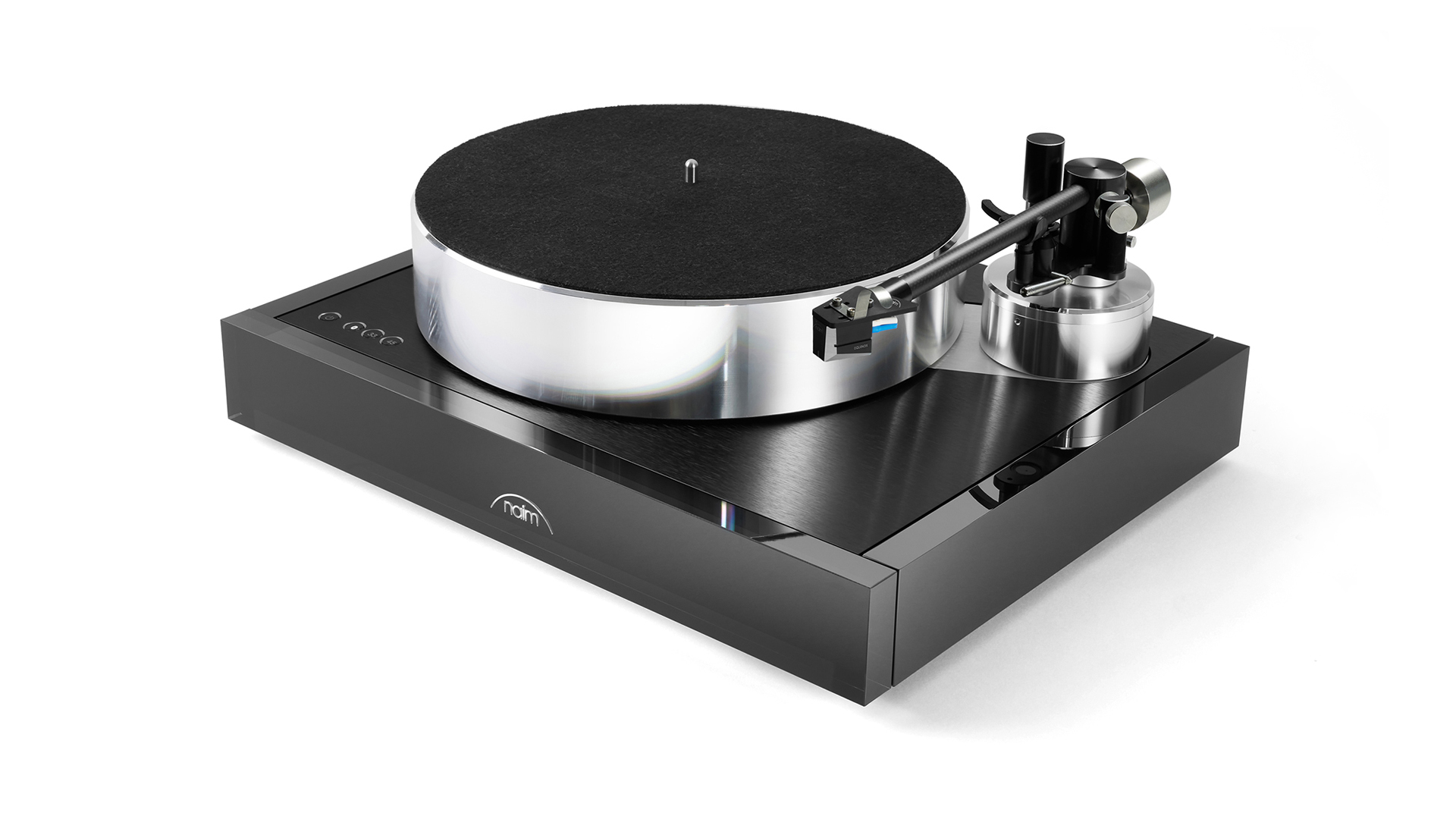Early Verdict
Naim's first turntable shows plenty of promise. We can't wait to spend more time with it to find out more.
Pros
- +
Clever engineering
- +
Refined arm design
- +
Promising sound quality
Cons
- -
Only available as part of a complete package
Why you can trust What Hi-Fi?
Naim Audio was founded in 1973. Initially, the company only built amplifiers, but it wasn’t long before other parts of the hi-fi chain were added. There were cables, tuners, a tonearm and numerous speakers.
Over time, it reached a point where it was possible to have a top-to-tail Naim branded set-up, including equipment supports and even the recordings to play on it. But there has been one glaring omission in the company’s output, one that’s finally filled with the introduction of the Solstice Special Edition record player package.
After waiting almost five decades, we finally get a Naim turntable. The Solstice is a fascinating mix of clever engineering and fuss-free operation. The introductory run of 500 units is only available as a package, which includes the turntable (complete with arm and cartridge), a phono stage and a dedicated power supply.
You also get a bespoke accessory set, which includes essentials such as a digital stylus gauge, spirit level and hex tools to set up the deck, along with a special Naim-produced record and a book on the company’s history and the Solstice’s development. The price for all this loveliness is £16,000 / $20,000 / AU$32,000.
At the moment, it isn’t possible to buy the various constituent parts of this package separately, but if it is well received, we’d be surprised if the individual components weren’t made available to buy. Time will tell.
The Clearaudio connection
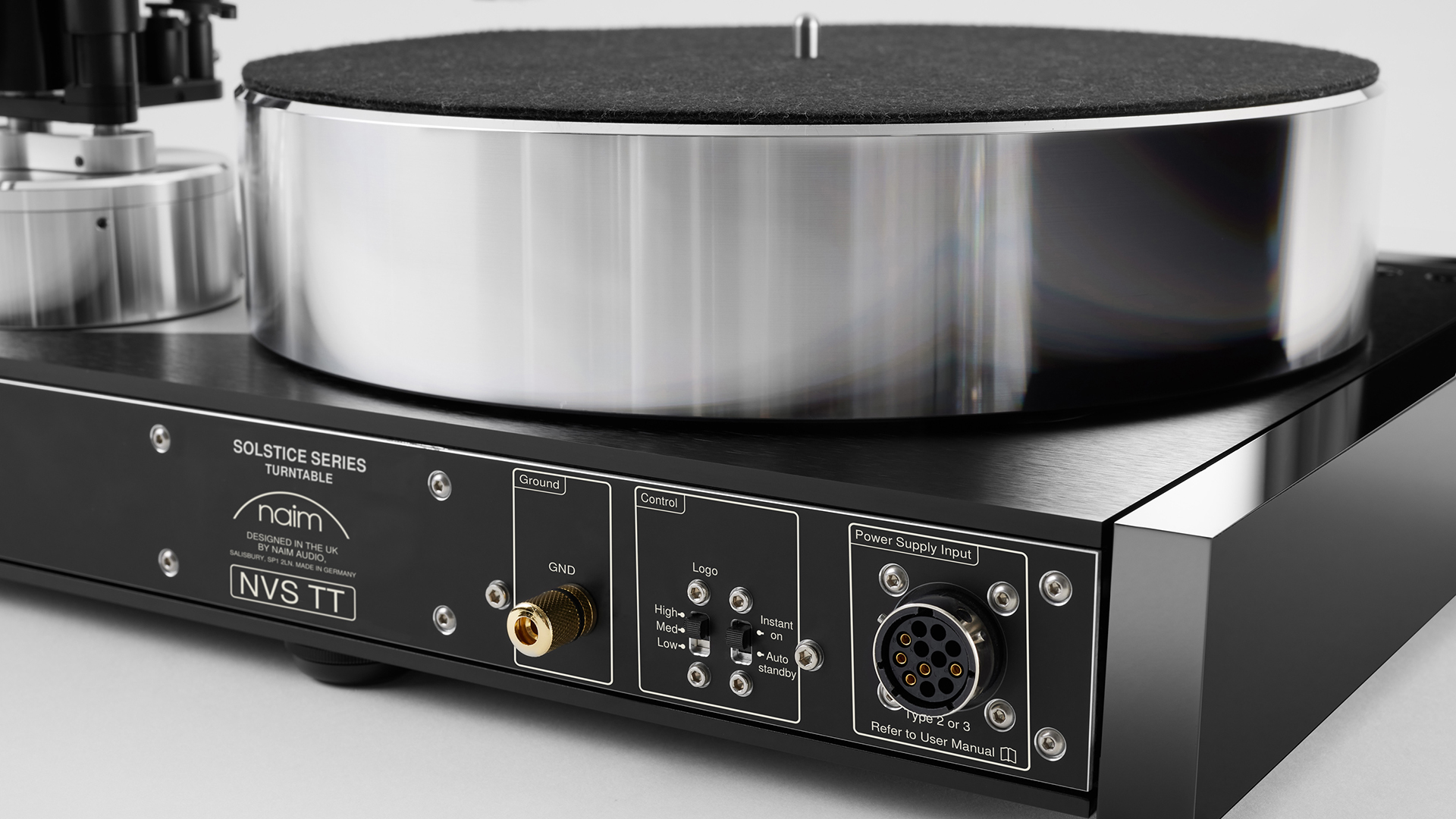
The skills set required to design, develop and manufacture a record player are different from those needed to make audio electronics, so it makes sense for Naim to team up with turntable specialist Clearaudio to make the Solstice.
Naim admits that Clearaudio has manufactured the deck, arm and cartridge, but the company is also keen to point out that everything is done to its design and specifications. The Solstice isn’t simply a rebadged Clearaudio product.
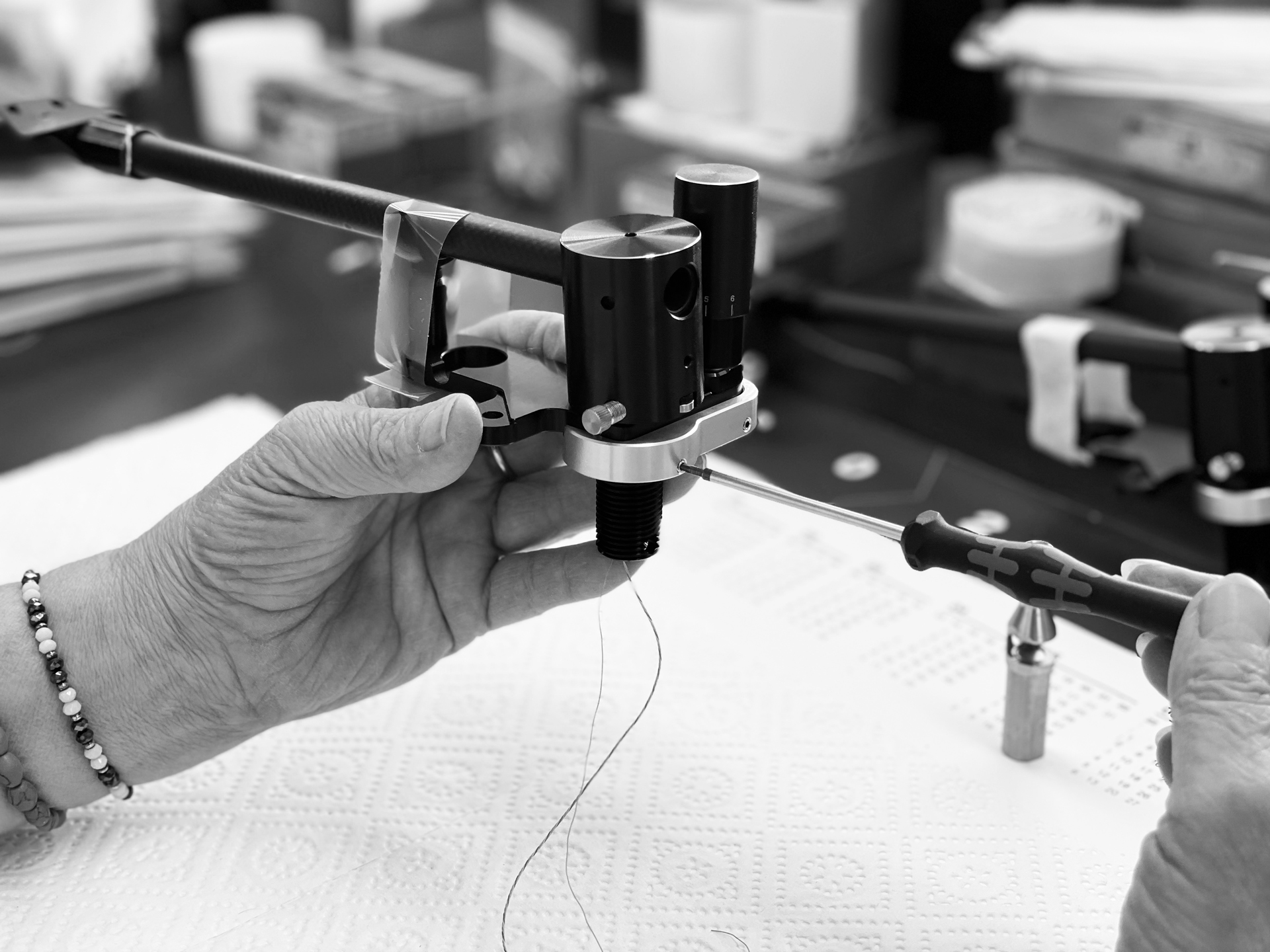
In fact, as we take a look around the deck, it’s only the Solstice’s floating magnetic main bearing design that reminds us of Clearaudio’s products – pretty much everything else on the Solstice looks bespoke.
We certainly can’t complain about the use of that magnetic main bearing on the grounds of performance. It’s a clever design that literally floats thanks to the strength of the magnetic field, and produces great results in high-end decks, such as the Clearaudio Innovation we used as a reference for many years.
The minimal contact between surfaces means that mechanical noise levels are extremely low. There’s also an optical sensor built into the assembly that sends signals back to the 24V DC brushless motor to maintain speed stability.
The art of isolation
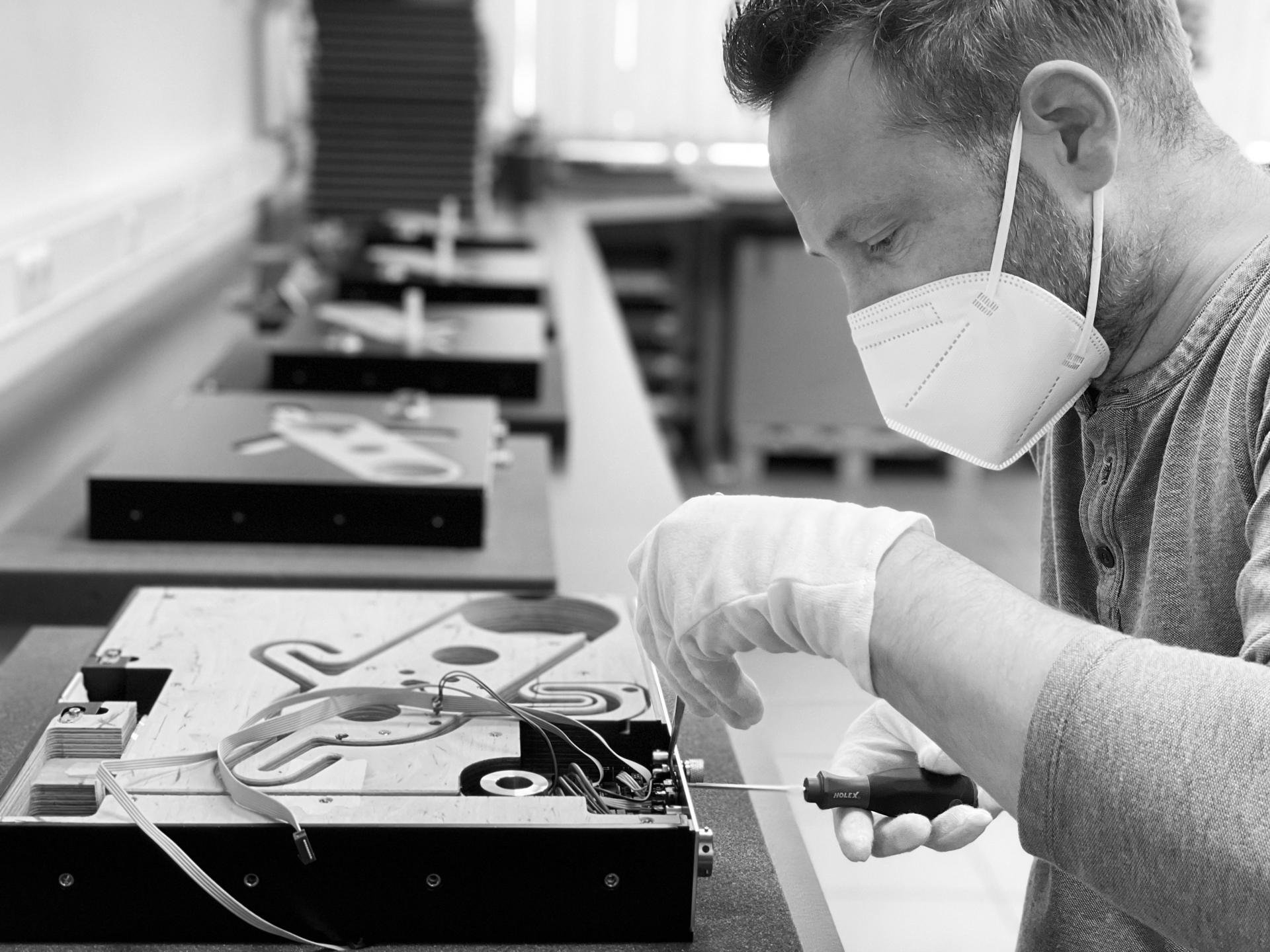
The Solstice’s 'suspension' is unusual. It wouldn’t have been a surprise to see a traditional sprung suspended sub-chassis system here, but Naim has gone down a different route entirely.
It has designed compliance into the deck’s 47-ply plinth core to provide a degree of mechanical decoupling of the main bearing and arm from the rest of the turntable structure. Aluminium top and bottom plates are used to rigidly couple the arm to the main bearing, and other plates reinforce the plinth’s ply core where compliance isn’t needed. Even the feet are specially designed to filter out certain frequencies.
That chunky aluminium platter is topped off by a felt mat and doesn’t have fashionable extras, such as a clamp to hold the record down. There’s no lid supplied as standard, though Clearaudio does offer dust covers for its own decks that will do the job for the Solstice.
The Aro tonearm lives on
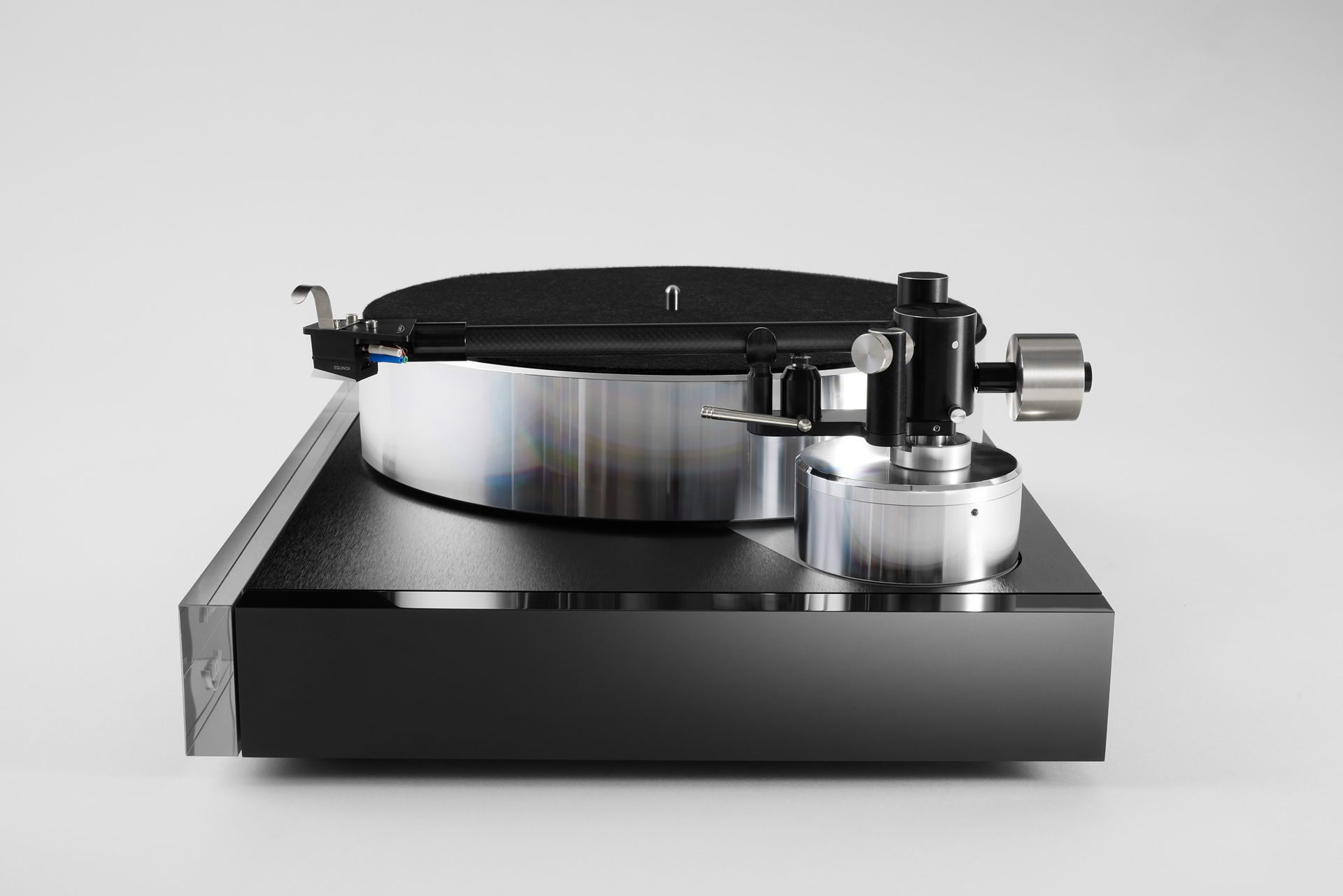
The original Aro arm has long had something of a cult following, and this new version aims to build on its sonic strengths. Comparing old with new, it’s obvious that the Mk2 has a slicker build and improved ease of use.
The armtube is now made of carbon fibre, rather than the aluminium alloy of the original, and the bias mechanism uses magnetism to apply force, rather than the basic string and weight arrangement that went before.
In terms of use, Naim has taken huge strides forwards with the Mk2 offering easy height adjustment and greater compatibility with a wider range of cartridges. There’s even a cartridge lift mechanism, something that was an optional extra on the original.
The Aro Mk2 remains a unipivot design, and that means it will feel a little less secure to handle than a traditional gimbal-bearing alternative. Once the stylus hits the groove, any excess wobble simply doesn’t matter.
Equinox MC is Naim's first cartridge
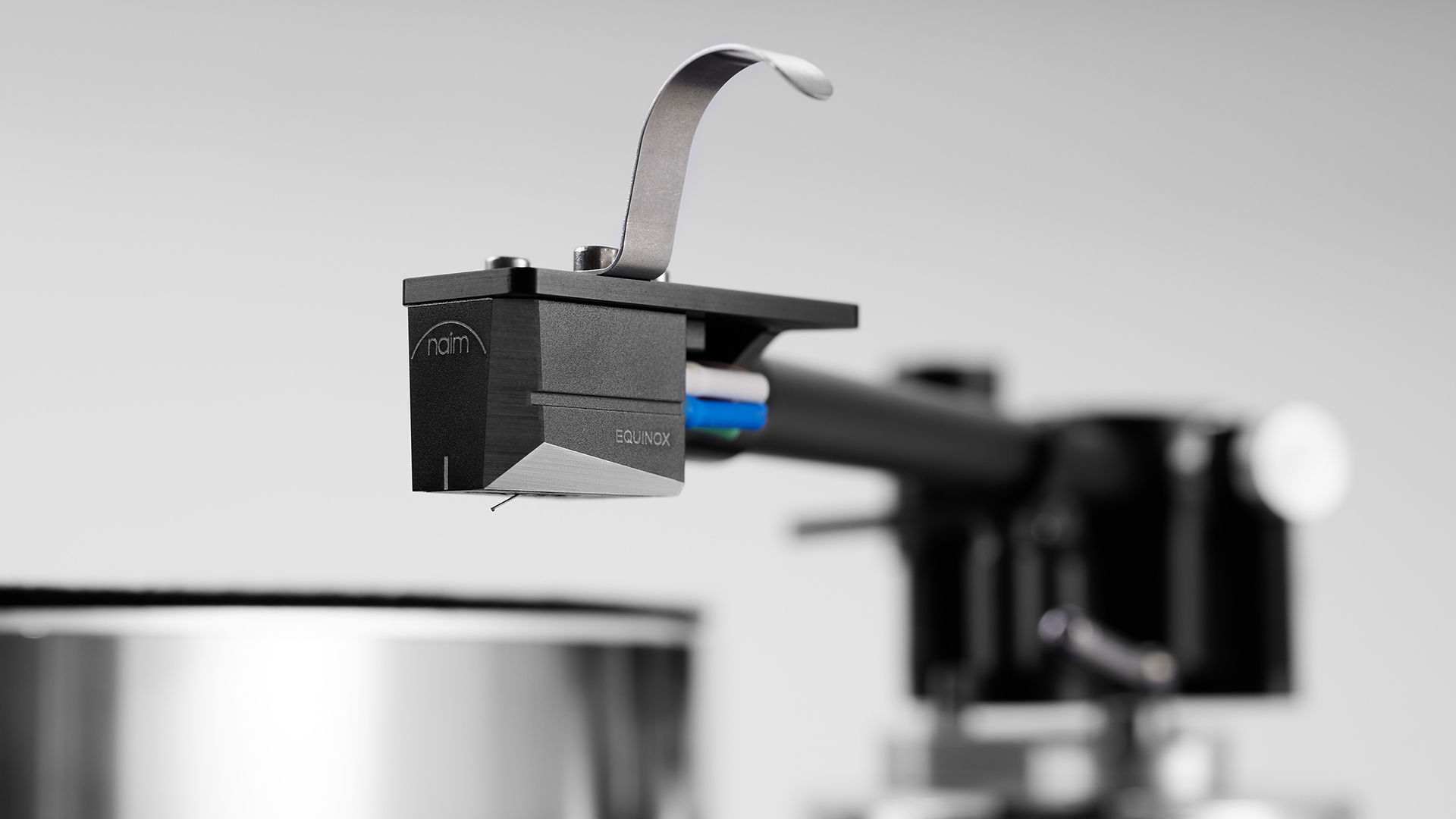
In all the excitement, it’s easy to overlook the fact that the Solstice package also includes Naim’s first cartridge, the Equinox MC. This moving coil is based on a high-end Clearaudio design, but the fact it uses a specially machined aluminium body, boron cantilever and microline stylus makes this very much a Naim product.
That’s never in doubt when we get to the phono stage and partnering power supply. These are built into a smart new style of case, with only the power button on the top panel of the Solstice power supply marking the sole point of distinction.
That’s until you see the back panels, where the phono stage has separate moving coil and moving magnet inputs and rotary dials for loading adjustments and the power supply sports just a couple of power sockets.
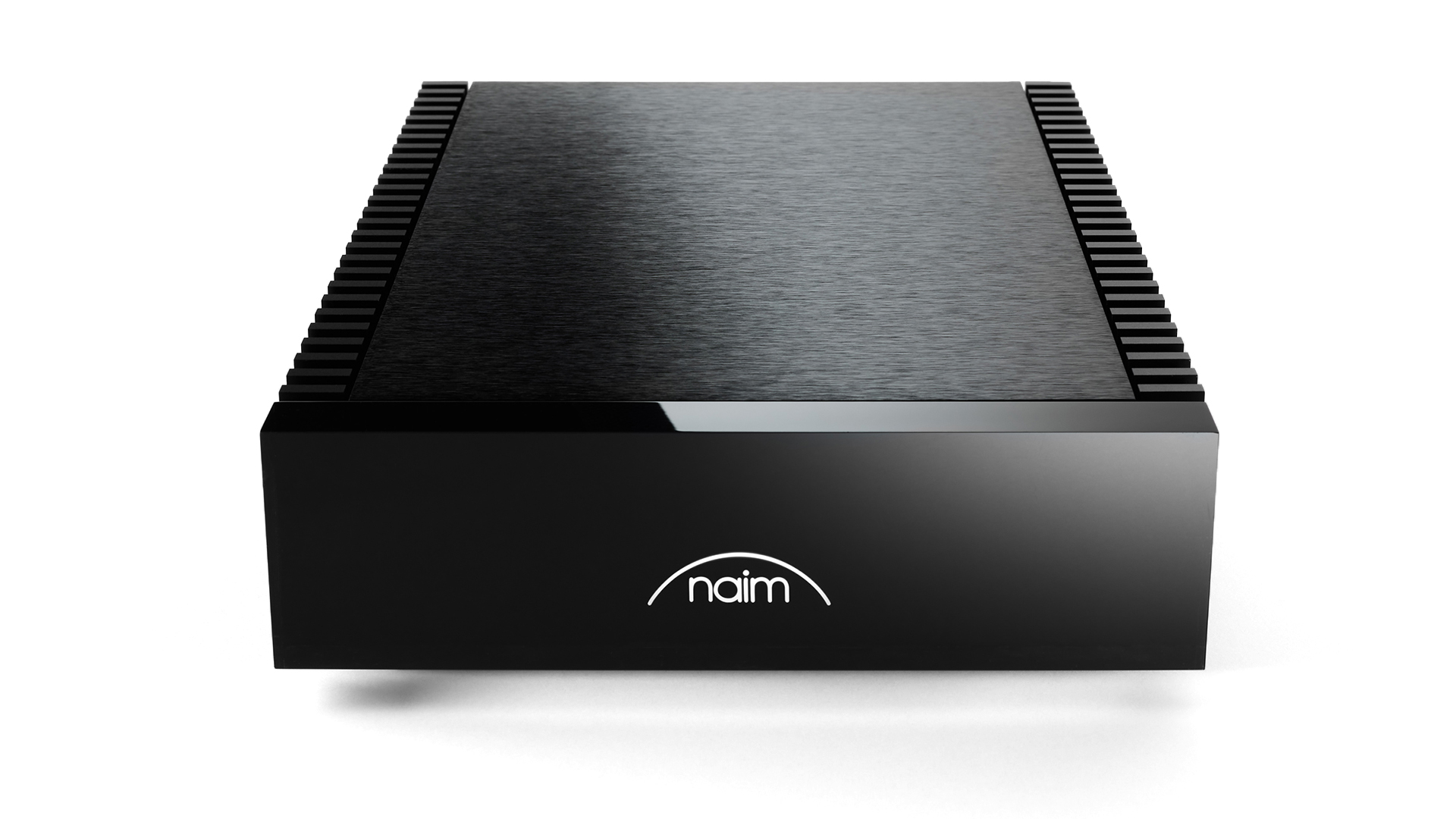
The phono stage is compatible with a wide range of moving magnet and moving coil cartridges and, unlike previous designs, is easily adjustable so you can fine-tune the performance of the cartridge. Inside, is a low noise Class A circuit that uses lessons learned from Naim’s range-topping Statement pre/power to maximise performance.
We take the lid off and, as usual with Naim products, it’s genuinely astonishing to see the attention to detail in the manufacturing. We’re always impressed by the care taken in dressing the various cables and the neatness of the circuit layout.
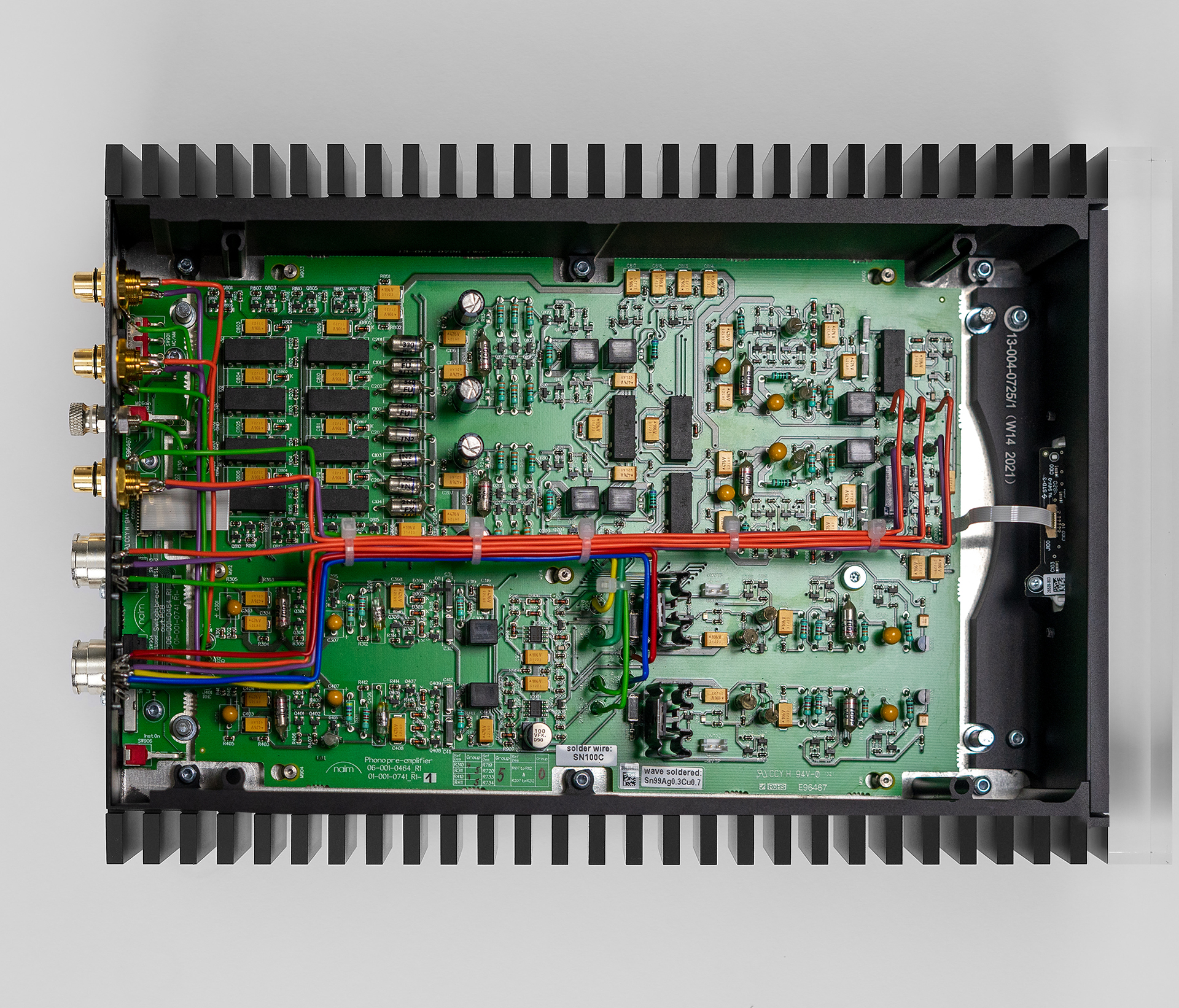
The partnering power supply has separate power feeds for both the phono stage and the turntable. It, like the phono stage, makes use of the company’s much-vaunted DR regulation circuitry to ensure a clean, stable and low noise power feed.
Initial verdict
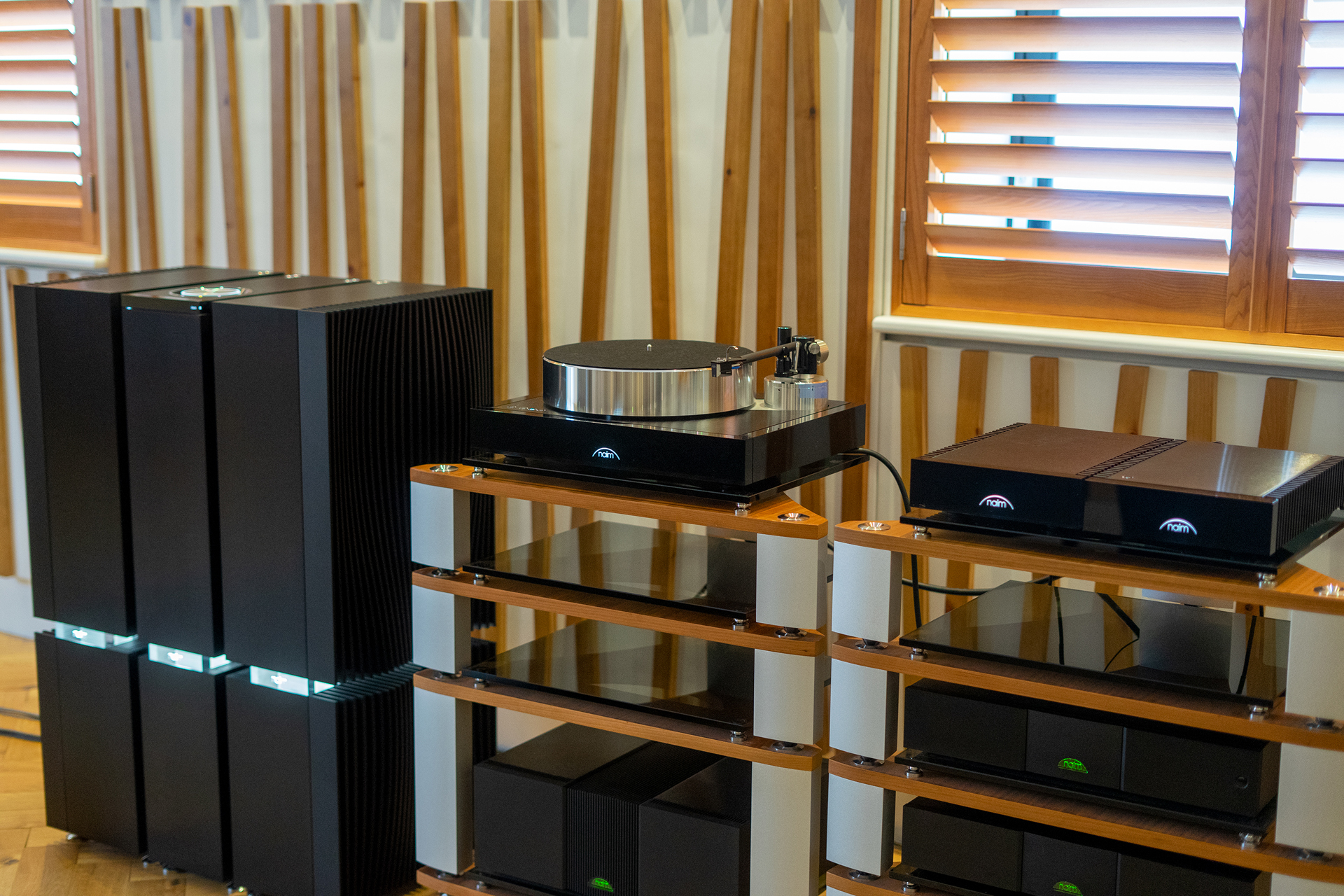
We heard the Solstice package in Naim's newly refurbished demo room. It was plugged into the company’s Statement pre/power combination (£160,000) and a pair of Focal Stella Utopia Evo EM floorstanding speakers (£95,000).
If you judge a product on price, then the Solstice package looks pretty lightweight in such company. But start listening and the story is quite different. It’s impossible to offer any firm judgment on a product that's in an unfamiliar system and room, but we get the impression that the Solstice is a highly competitive performer.
For starters, the turntable doesn’t feel as though it's holding the rest of the system back. As we listen to a range of music from Johnny Cash to Faithless, it’s obvious that the deck digs up plenty of detail and is capable of organising it into a cohesive and musical whole.
The system has a high level of transparency that makes the production and recording differences between the albums obvious. It’s a fast and clear sound that has plenty in the way of attack. We have no issue with bass depth, power or punch, with the system displaying impressive levels of grip and control at low frequencies.
We enjoy the huge scale of the sound and love the ease with which the system dynamics go from pin-drop quiet to borderline uncomfortable. Of course, those lavish amplifiers and speakers play a pivotal role in this, but we think it’s fair to assume that the Solstice record player deserves a chunk of the credit.
Any definitive judgment will have to wait until we get a sample of the Solstice in our test room and plugged into a reference system we know well. Until then, all we can say is that the signs are very good indeed.
MORE:
The best Amazon Prime Day 2021 tech deals live right now
See all our Naim reviews
Our pick of the best record players on the market
What Hi-Fi?, founded in 1976, is the world's leading independent guide to buying and owning hi-fi and home entertainment products. Our comprehensive tests help you buy the very best for your money, with our advice sections giving you step-by-step information on how to get even more from your music and movies. Everything is tested by our dedicated team of in-house reviewers in our custom-built test rooms in London, Reading and Bath. Our coveted five-star rating and Awards are recognised all over the world as the ultimate seal of approval, so you can buy with absolute confidence.
What is a hands on review?
'Hands on reviews' are a journalist's first impressions of a piece of kit based on spending some time with it. It may be just a few moments, or a few hours. The important thing is we have been able to play with it ourselves and can give you some sense of what it's like to use, even if it's only an embryonic view.
-
cryanhorner i'm confused by the back end of the turntable, it does not appear to have any outputs, just power and ground, how does that work?Reply -
nopiano Reply
I suspect the signal leads are out of shot. I’m confident it won’t be mute!cryanhorner said:i'm confused by the back end of the turntable, it does not appear to have any outputs, just power and ground, how does that work? -
cryanhorner i saw a lot of images of the table on instagram this morning from all angles, and the outputs were nowhere to be found, but maybe they just used a dummy table for photos that didn't have cords because they thought it looked cleaner.Reply -
nopiano I found it. The answer that is, from Naim’s Clare Newsome: “Cable direct from tonearm, out of the underside of the deck, into the phono stage. Burndy is for power.”Reply -
cryanhorner Replynopiano said:I found it. The answer that is, from Naim’s Clare Newsome: “Cable direct from tonearm, out of the underside of the deck, into the phono stage. Burndy is for power.”
Oh, I see. Thanks for clearing that up. -
bristollinnet £16K for a turntable seems very silly to me, but at least its an audio manufacturer releasing something other than earbuds.Reply -
Winter Reply
could be pocket money for some!!!bristollinnet said:£16K for a turntable seems very silly to me, but at least its an audio manufacturer releasing something other than earbuds. -
djh1697 16k is cheaper than the top LP12 Klimax model, I wonder who will be the first to do an A/B comparison? Another Naim OEM product, what next? the 5si series?Reply -
hybridauth_Facebook_645074850 Replycryanhorner said:i'm confused by the back end of the turntable, it does not appear to have any outputs, just power and ground, how does that work?
The 'output' from the turntable is (with the exception of the ground) via the dedicated pins on the power socket.
